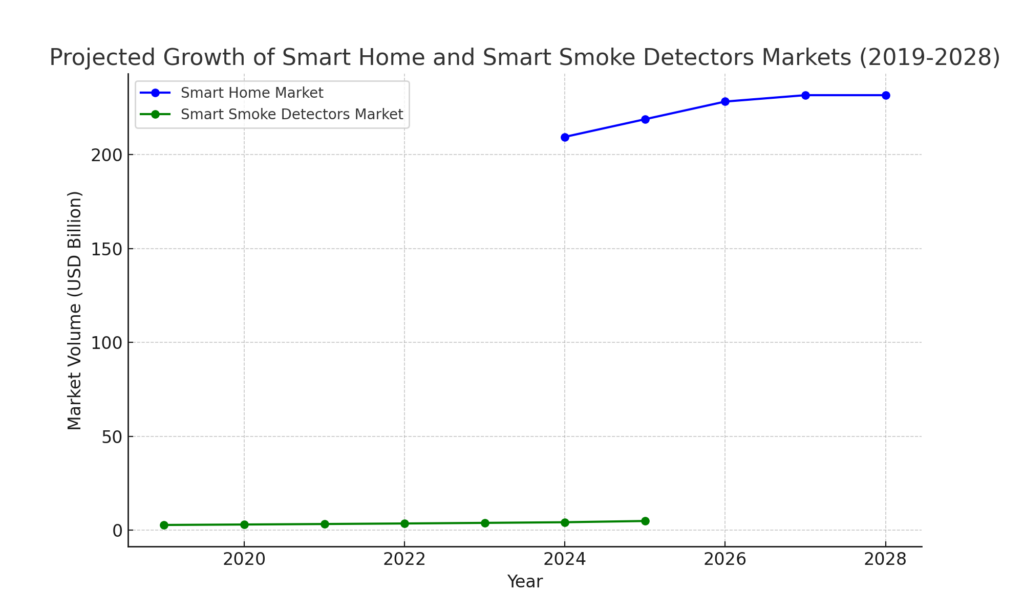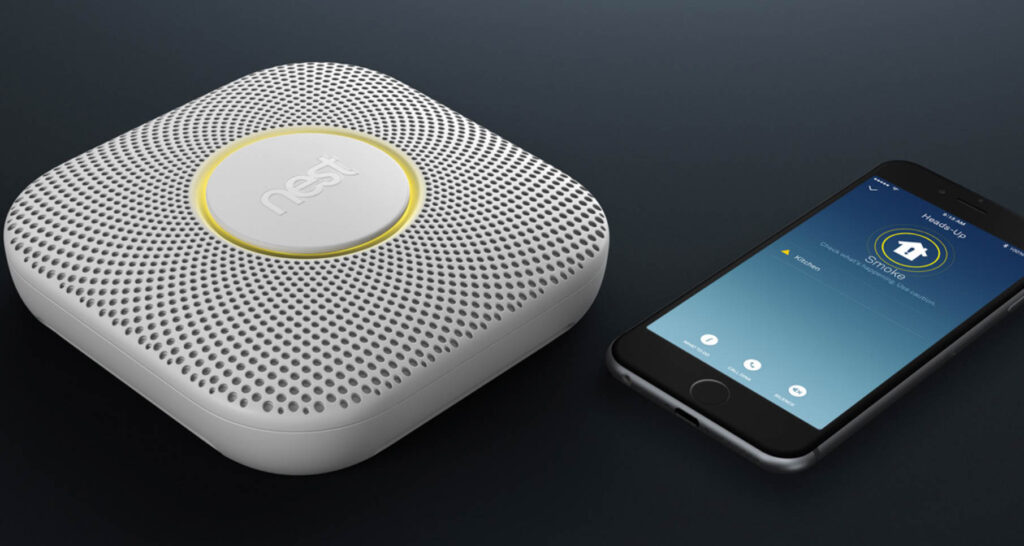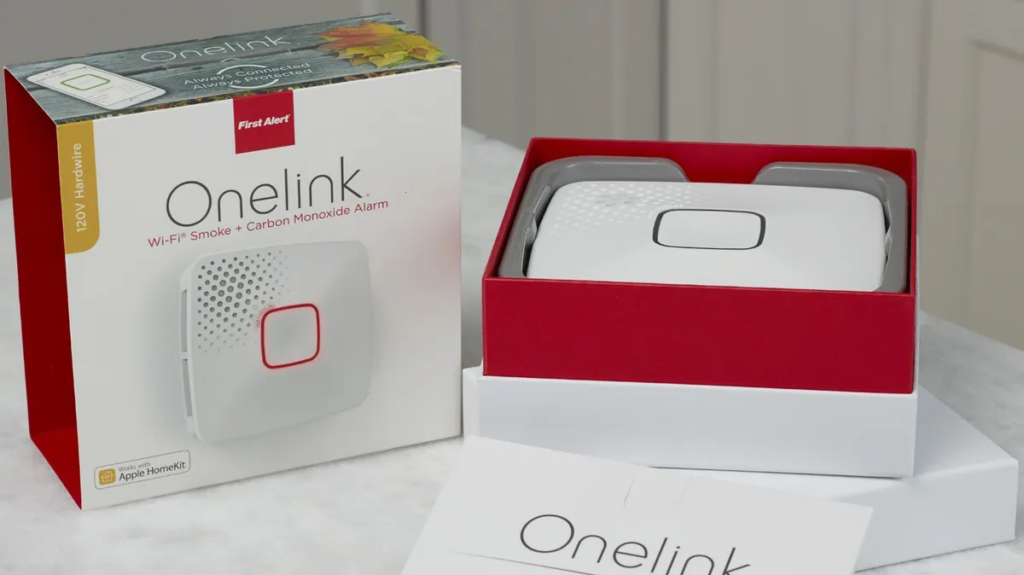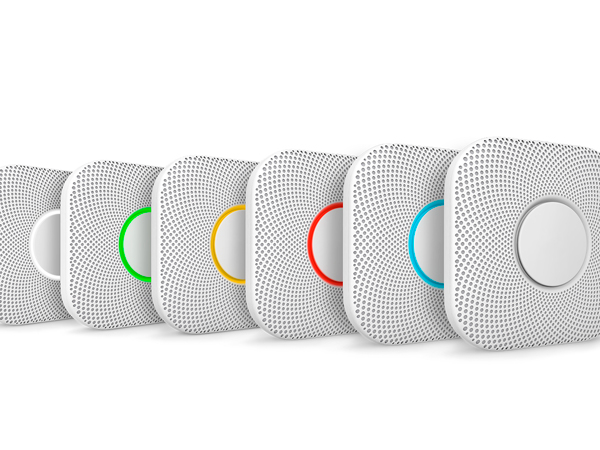Say goodbye to old, clunky smoke detectors that clash with your home decor. Smart smoke alarms are here, combining sleek designs with cutting-edge technology to fit seamlessly into any home decor. Leading brands like Nest Protect and First Alert smoke alarm offer devices that not only look great but also keep your home safer than ever.
Smart smoke alarms use a combination of ionization and photoelectric sensors to detect both fast-flaming and smoldering fires, significantly reducing the risk of false alarms. These devices connect to your smartphone, sending real-time alerts no matter where you are.
A report by Statista projects that the smart home market will grow by 10.67% from 2024 to 2028, reaching a market volume of USD 231.6 billion by 2028, with smart security systems being a major contributor. Data gleaned from Grand View Research suggests that the global market for smart smoke detectors is expected to reach $4.97 billion by 2025, growing at a compound annual growth rate (CAGR) of 8.7% from 2019 to 2025.

This surge is driven by increasing consumer awareness about fire safety and the rising adoption of smart home technologies in luxury homes.
Why You Need a Smart Smoke Alarm
According to the National Fire Protection Association (NFPA), three out of five home fire deaths occur in homes without working smoke alarms. One of the best features of smart smoke alarms is their ability to send instant alerts to your phone. Wherever you are, you’ll know immediately if there’s a potential fire hazard.
Smart smoke alarms are designed to integrate effortlessly with your existing smart home setup. Whether you’re using Amazon Alexa, Google Assistant, or Apple HomeKit, these alarms can sync with your system, allowing you to control and monitor them with simple voice commands.
Forget about the annoying beeps of traditional smoke alarms reminding you to change batteries. Smart smoke alarms perform regular self-tests and will alert you when maintenance is needed.
Many smart smoke alarms come with voice alerts that clearly announce the type of danger and its location, helping you respond more effectively. Some models, like the Nest Protect, even have a nightlight feature with gentle illumination during nighttime alerts.
How to Choose the Best Smart Smoke Detectors
Choosing the best smart smoke detector involves evaluating your home’s specific needs and the features of the available options. Start by assessing the size and layout of your home. Larger homes might benefit from interconnected systems, such as the Nest Protect or the First Alert smoke alarm, which ensure comprehensive coverage across all rooms.
Next, consider the power source—battery or hardwired. Battery-powered models offer flexibility in placement but require regular maintenance to avoid the dreaded smoke alarm chirping due to low battery. Hardwired models, while more permanent, may require an electrician for installation but eliminate the concern of dead batteries.
Compatibility with your smart home ecosystem is also crucial. If you’re heavily invested in Amazon Alexa, for example, a smoke alarm that integrates seamlessly with Alexa, like the First Alert Onelink Safe & Sound, would be ideal.
The Best Smart Smoke Detectors You Can Buy
1. Nest Protect

The Nest Protect is a top-of-the-line smart smoke detector that excels in both functionality and design. It detects both smoke and carbon monoxide, providing comprehensive protection. When it senses a hazard, it not only sounds an alarm but also changes the color of its LED ring for a visual cue, and sends a detailed notification to your phone specifying the nature and location of the alert.
Available in both wired and battery-powered versions, the Nest Protect can be linked with other Nest Protect devices in your home. This interconnected system ensures that if one alarm goes off, all others will follow suit, providing a thorough alert system throughout your house. However, it’s worth noting that the Nest Protect no longer works with Google Home, limiting some of its smart-home functionality.
2. First Alert OneLink Safe & Sound

The OneLink Safe & Sound combines smoke and carbon monoxide detection with the functionality of a smart speaker. With Alexa built-in, this device allows you to play music, listen to audiobooks, control other smart devices, and access a wide range of Alexa functions, all while ensuring your home’s safety.
It also integrates with Apple’s HomeKit, providing flexibility for various smart home ecosystems. The OneLink Safe & Sound requires a hardwired connection, which might limit installation options but ensures a reliable power source. Its competent 10-watt speaker adds to its appeal, making it a multifunctional device that enhances both safety and convenience in your home.
3. Apple HomePod Mini

For Apple gadget lovers, the Apple HomePod mini offers a seamless smart home experience. Although it doesn’t detect smoke or carbon monoxide directly, it can listen for alarms and send notifications through the HomeKit app on your Apple devices. If you have a HomeKit-compatible security camera, the notification will include a live image, allowing you to quickly assess the situation.
Besides its alert capabilities, the HomePod mini delivers excellent audio quality and features temperature and humidity sensors. Its compact and attractive design, coupled with the ability to pair with another HomePod mini for stereo sound, makes it a versatile addition to any HomeKit setup.
4. Onelink Smart Smoke + Carbon Monoxide (2nd Gen)

The second-generation Onelink Smart Smoke + Carbon Monoxide alarm is an excellent choice for those seeking an affordable yet capable device. Available in both battery and hardwired models, it uses photoelectric technology, which is particularly effective at detecting smoldering fires. This alarm can be interconnected with other Onelink devices, ensuring that an alert in one part of your home triggers all alarms.
The LED ring changes color based on the alarm’s status, providing a clear visual indication of any issues. Compatible with both Alexa and HomeKit, the Onelink alarm offers flexibility in smart home integration, although it does not support Google Assistant. The setup process can be a bit challenging, but once configured, it provides robust protection and smart home functionality at a reasonable price.
5. Amazon Echo Dot (5th Gen)

The Amazon Echo Dot, while not a smoke detector itself, can enhance your existing setup. By subscribing to Alexa Emergency Assist for $59 per year, the Echo Dot can listen to the sound of your current smoke detectors and send alerts to your smartphone. This feature allows you to keep your older detectors while gaining the convenience of remote notifications.
The Echo Dot features better sound quality and comes in versions including one with a clock display. Though it has a large power brick, it’s still a budget-friendly choice for adding smart home alerts.

What to Consider Before Buying a Smart Smoke Alarm
Consider these factors to choose the right smart smoke alarm for your needs.
- Type of Sensors: Ensure the alarm includes both ionization and photoelectric sensors for comprehensive detection of different fire types.
- Power Source: Smart smoke alarms come in either battery-powered or hardwired versions. Battery-powered models offer easier installation but require regular battery changes, while hardwired models provide continuous power but might require professional installation.
- Smart Home Compatibility: Make sure the smoke alarm is compatible with your existing smart home devices, whether you use Amazon Alexa, Google Assistant, or Apple HomeKit.
- Connectivity: Consider whether you want an interconnected system, where all alarms in the house go off if one is triggered, or if a standalone unit suffices for your needs.
- Additional Features: Some smart smoke alarms come with extra features like nightlights, voice alerts, and remote silence options, which can add convenience and functionality to your home safety system.
How We Test the Best Smart Smoke Detectors
Testing smart smoke detectors involves evaluating several critical factors: ease of installation, sensor accuracy, connectivity, and smart home integration. We begin by installing the detectors in different locations within a home to assess their responsiveness to both smoke and carbon monoxide.
The next step involves testing their connectivity with smart home systems like Amazon Alexa, Google Assistant, and Apple HomeKit. We also simulate various fire scenarios to observe how quickly and accurately the detectors respond, including how well they differentiate between actual threats and false alarms.
Finally, we evaluate the user interface of the associated smartphone apps, checking how intuitive they are for receiving alerts, performing tests, and adjusting settings.
Smoke Detectors FAQs
- Q: What causes a smoke alarm to chirp?
A: A smoke alarm chirping is often a sign that the battery is low and needs replacement. However, it could also indicate a need for maintenance or that the alarm is nearing the end of its life. - Q: Can smart smoke alarms prevent false alarms?
A: Smart smoke alarms, like the First Alert smoke and carbon monoxide alarm, use advanced sensors. These sensors can distinguish between real threats and common causes of false alarms, like steam or cooking smoke. - Q: How often should I test my smoke alarm?
A: It is recommended to test your smoke alarms at least once a month to ensure they are functioning properly. - Q: Do smart smoke alarms work during a power outage?
A: Battery-powered smart smoke alarms will continue to work during a power outage. For hardwired models, having a battery backup is crucial to ensure they remain operational. - Q: Can I integrate my smart smoke alarm with other smart devices?
A: Yes, most smart smoke alarms are compatible with smart home systems like Amazon Alexa, Google Assistant, and Apple HomeKit, allowing for seamless integration and control.
You must be logged in to post a comment.